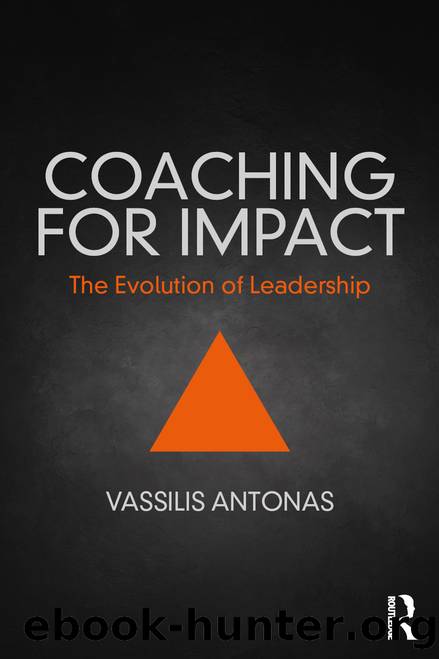Coaching for Impact by Vassilis Antonas

Author:Vassilis Antonas
Language: eng
Format: epub
Publisher: Taylor and Francis
Before concluding the section on giving feedback, it may be useful to share some tips in bullet-point form:
⢠Donât take it for granted that your coachee wants to receive feedback. Ask first.
⢠Present your opinions and assumptions in context and not as facts.
⢠Give feedback on one issue at a time. Usually, there is one central theme anyway.
⢠Set your tone to suit your clientâs style and personality.
⢠Timing is of the essence: too soon and rapport is lost. Too late and sensitivity is hindered.
⢠Focus primarily on the behaviour and then on the person.
And, of course, remember that unwanted feedback can be shaming and traumatic. Everyone has their own pace and style and, according to John Whitmore (1992, p. 150): âIf resistance persists, coachees are either resisting being more aware or being more responsible.â Which conveniently moves us on to the next section.
Receiving feedback should form part of the coachâs (self-)assessment and should take place unofficially throughout the coaching or consulting engagement and officially, perhaps even statistically, at the end or during the follow-up phase. Did the coachee find the sessions useful? Did you challenge and support in equal measure? Was the outcome sustainable? Was rapport established? We should be open and try to receive feedback in a non-defensive way. After all, if we wish to pursue excellence, we need to constantly improve. For the narcissists among us, this is a good framework that will render our shortcomings bearable.
At the same time, it is vital that we âtrainâ our clients in the art of collecting feedback. It is rare that I do not assign this task to my coachees after the third or fourth session, even after a 360 has been conducted. Written statistical surveys cannot replace a face-to-face exchange, and an executive proactively seeking to improve is far more powerful than an executive who has been assigned to collect feedback through a tool in the context of their coaching assignment.
The first thing I convey to my clients, especially the ones with a tendency to engage in endless defensive rhetoric regarding feedback they have received and the circumstances surrounding it, is that regardless of how well we explain or rationalise our behaviour, its impact remains the same. There is a very specific beginning to a sentence, which allows us to diagnose that someone is about to fight feedback (or helpful suggestions and recommendations): It goes something like this: âYes, but â¦â
It is my opinion that this âYes, but â¦â is possibly the most counterproductive position ever adopted (and yes, I have used absolutes deliberately in this statement). Eric Berne (1964) expanded on the theme of âYes, but â¦â in his landmark text, Games People Play, concluding that a series of âyes, butsâ leads either to silence or forces the recipient of the âyes, butâ to agree with the â usually stubbornly helpless â position of the âyes, but-erâ.
The trick here is to engage in the âyes, but â¦â dialogue for just about long enough to produce a respectable volume
Download
This site does not store any files on its server. We only index and link to content provided by other sites. Please contact the content providers to delete copyright contents if any and email us, we'll remove relevant links or contents immediately.
Bullshit Jobs by David Graeber(4094)
Radical Candor by Kim Scott(2668)
I Am Right, You Are Wrong by Edward De Bono(2420)
23:27 by H. L. Roberts(2195)
Nomadland by Jessica Bruder(2014)
Average Is Over by Tyler Cowen(1802)
The Conflict Resolution Phrase Book by Barbara Mitchell & Cornelia Gamlem(1734)
Out of Our Minds: Learning to Be Creative by Ken Robinson(1689)
High-Impact Interview Questions by Victoria A. Hoevemeyer(1663)
Who Moved My Cheese?: An Amazing Way to Deal With Change in Your Work and in Your Life by Johnson Spencer(1615)
The Ideal Team Player by Patrick M. Lencioni(1607)
An Everyone Culture: Becoming a Deliberately Developmental Organization by Robert Kegan & Lisa Laskow Lahey(1597)
The Asshole Survival Guide by Robert I. Sutton(1559)
Automatic Society by Bernard Stiegler(1511)
Unleashed by Anne Morriss & Frances Frei(1492)
Who by Street Randy & Smart Geoff(1468)
42 Rules of Employee Engagement by Susan Stamm(1438)
96 Great Interview Questions to Ask Before You Hire by Paul Falcone(1399)
Fish! by Stephen C. Lundin(1345)
